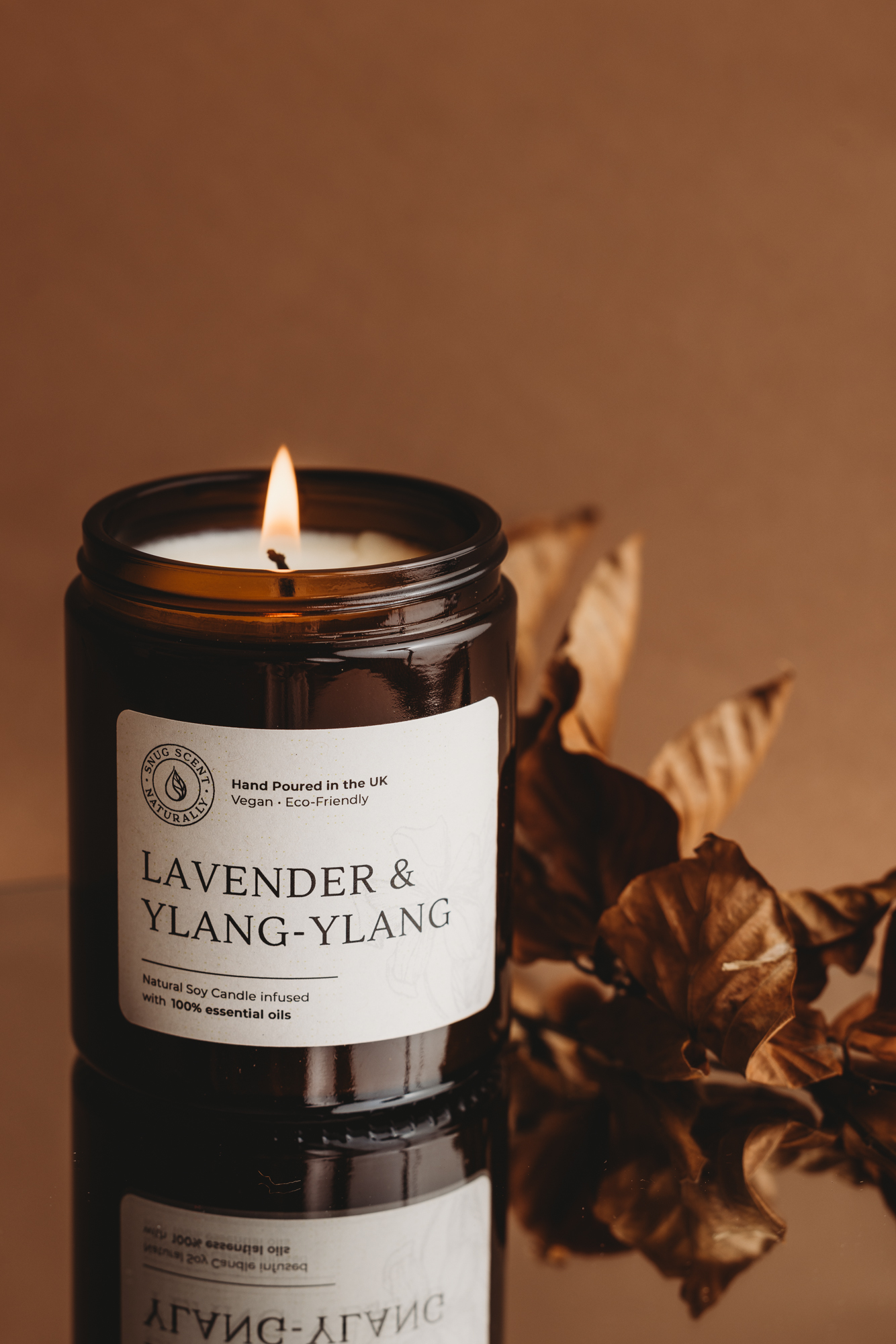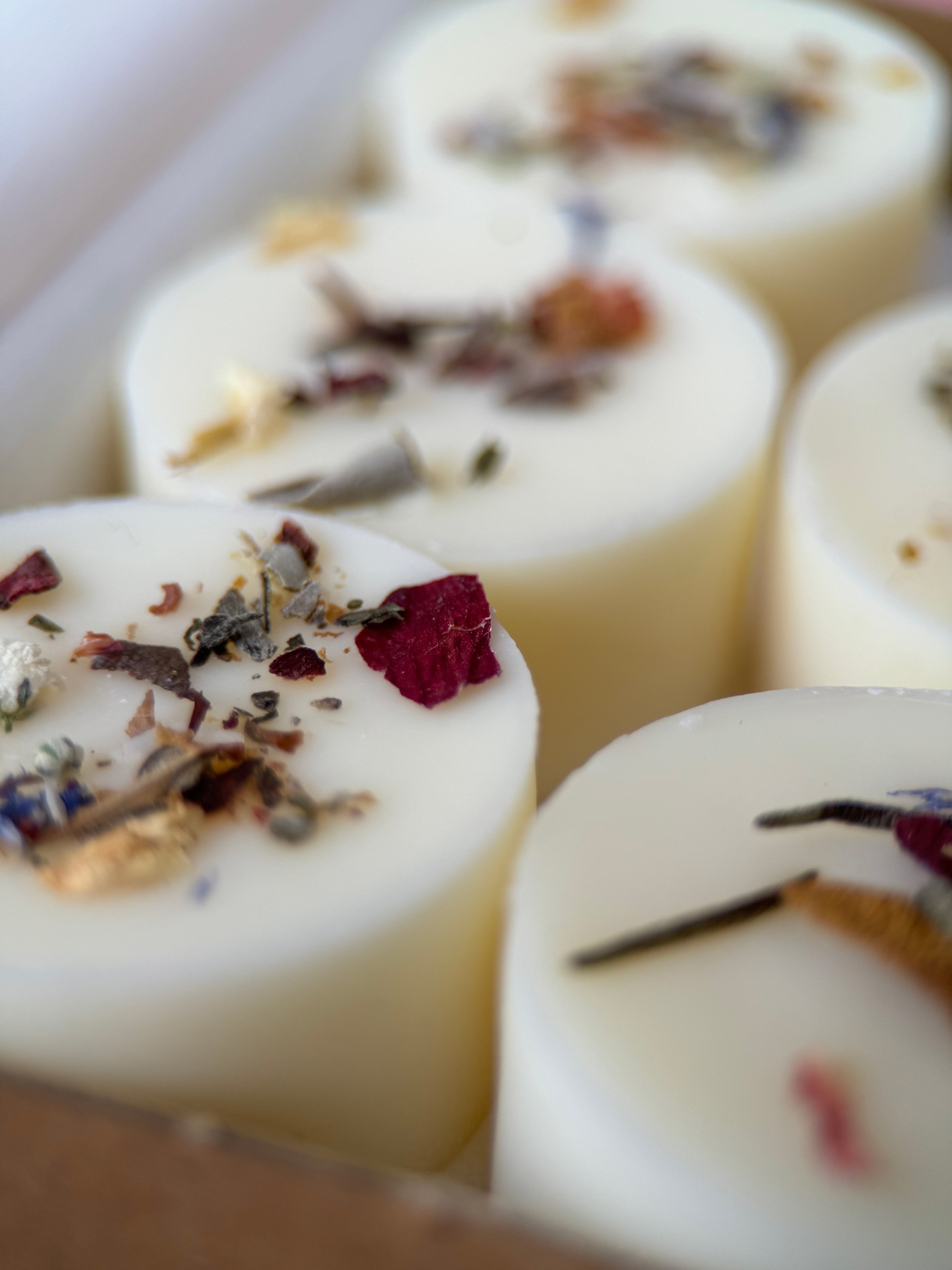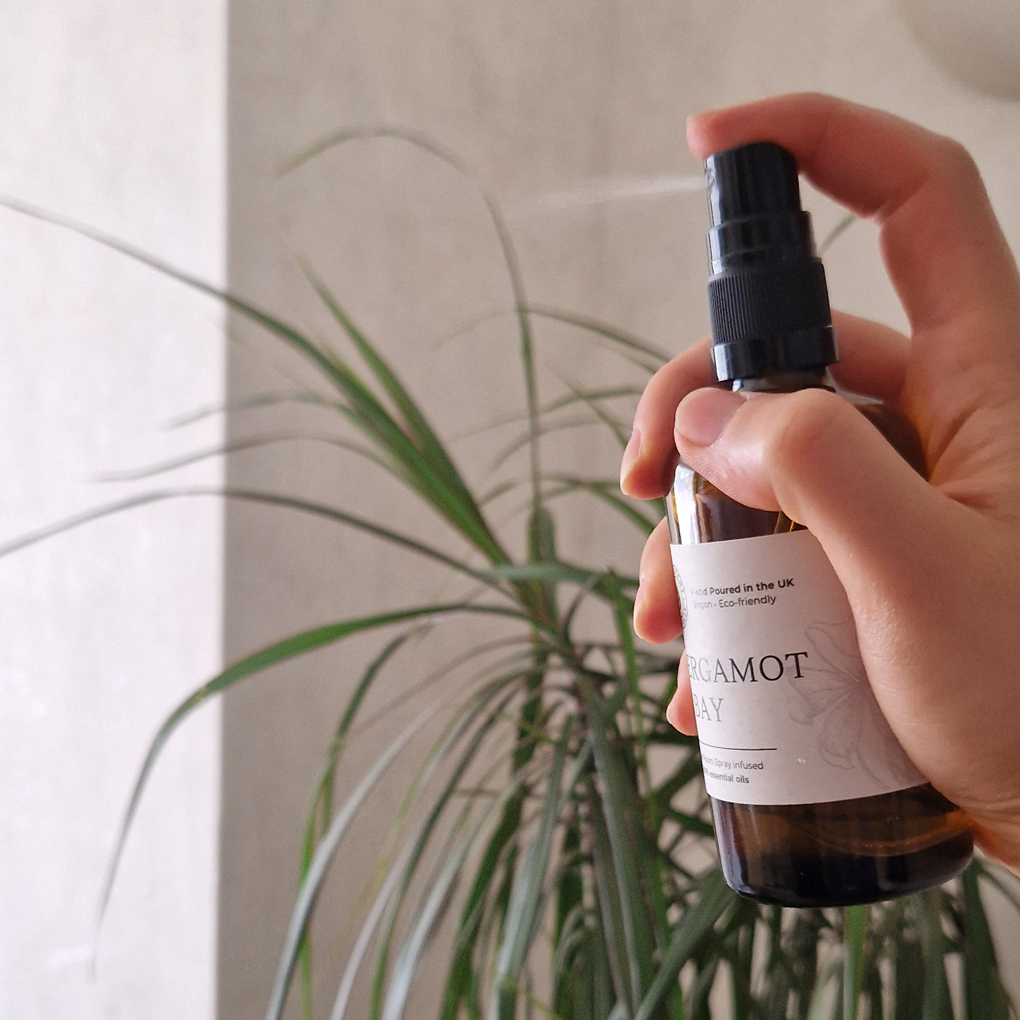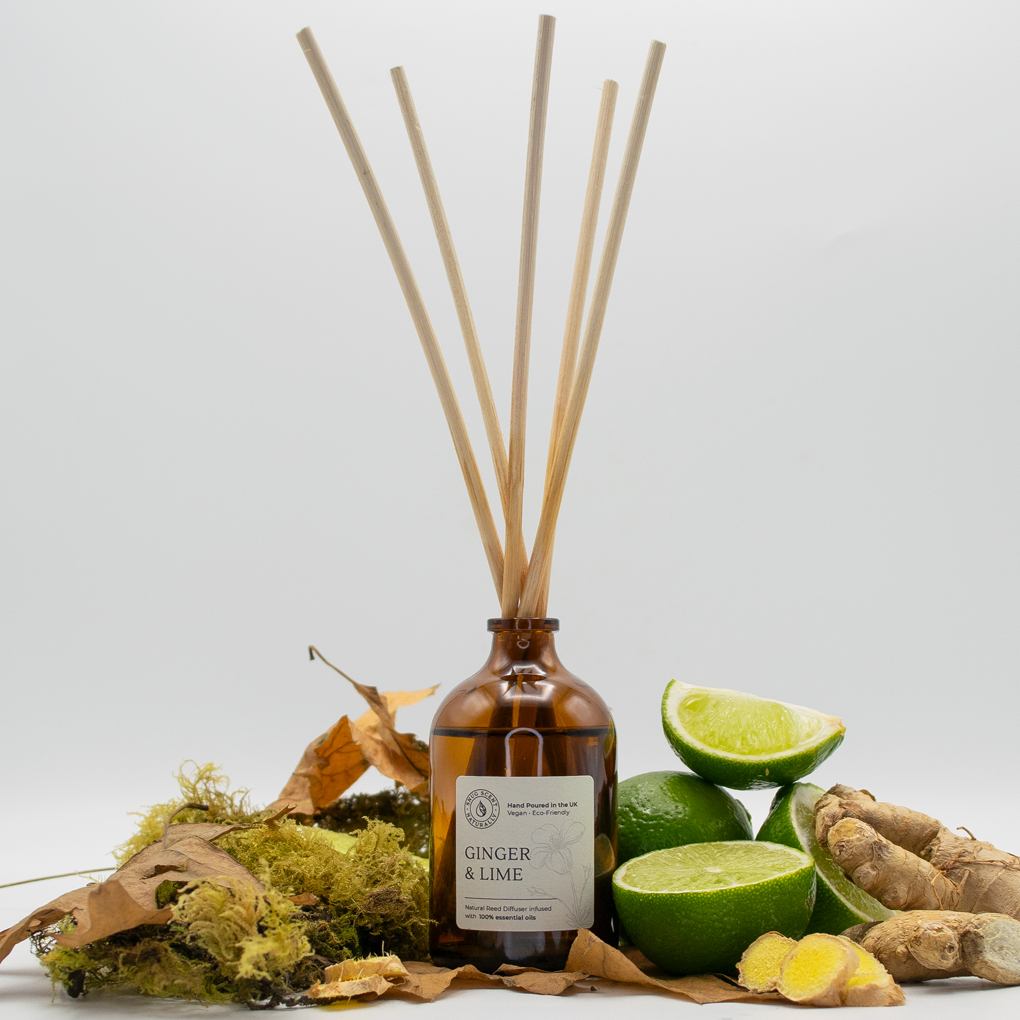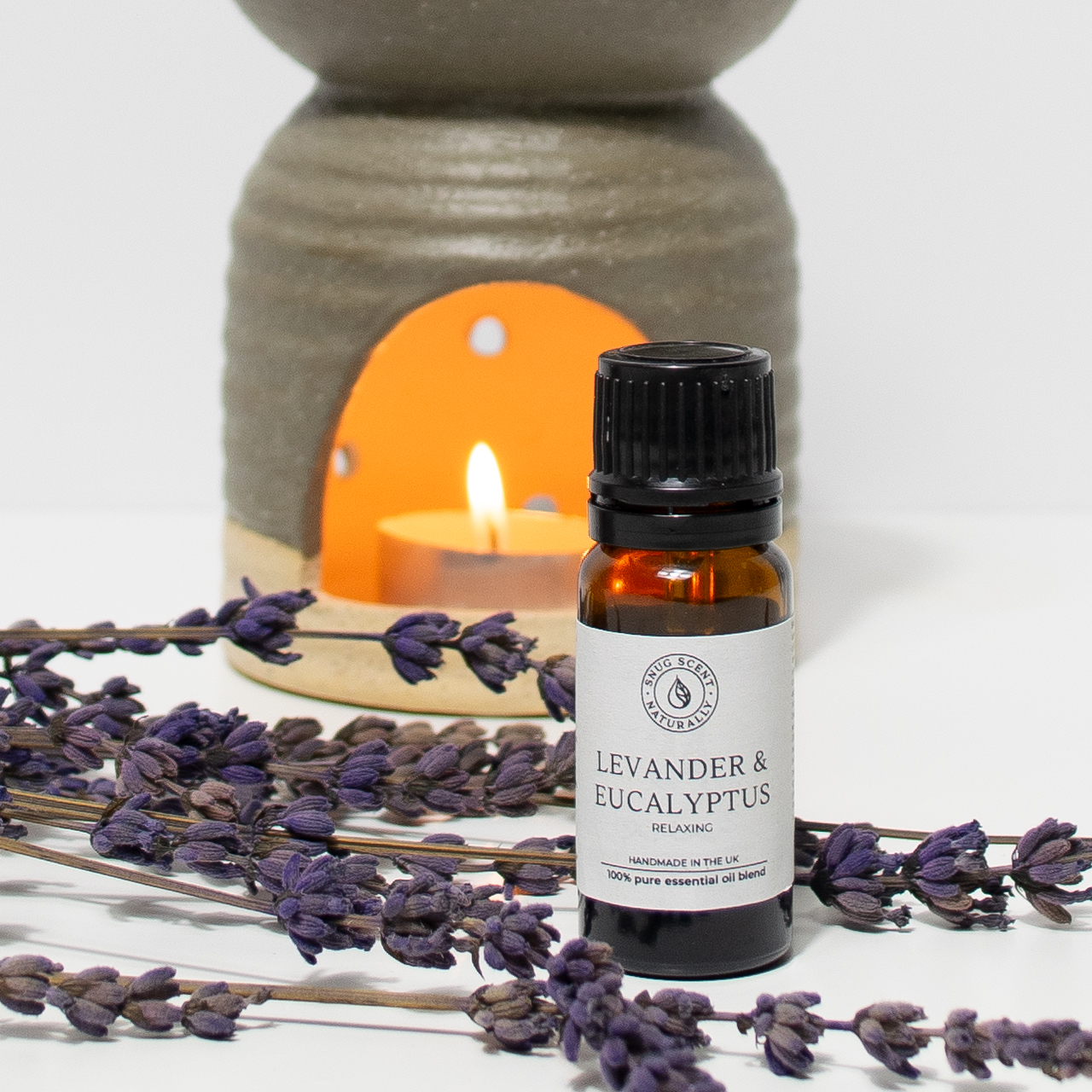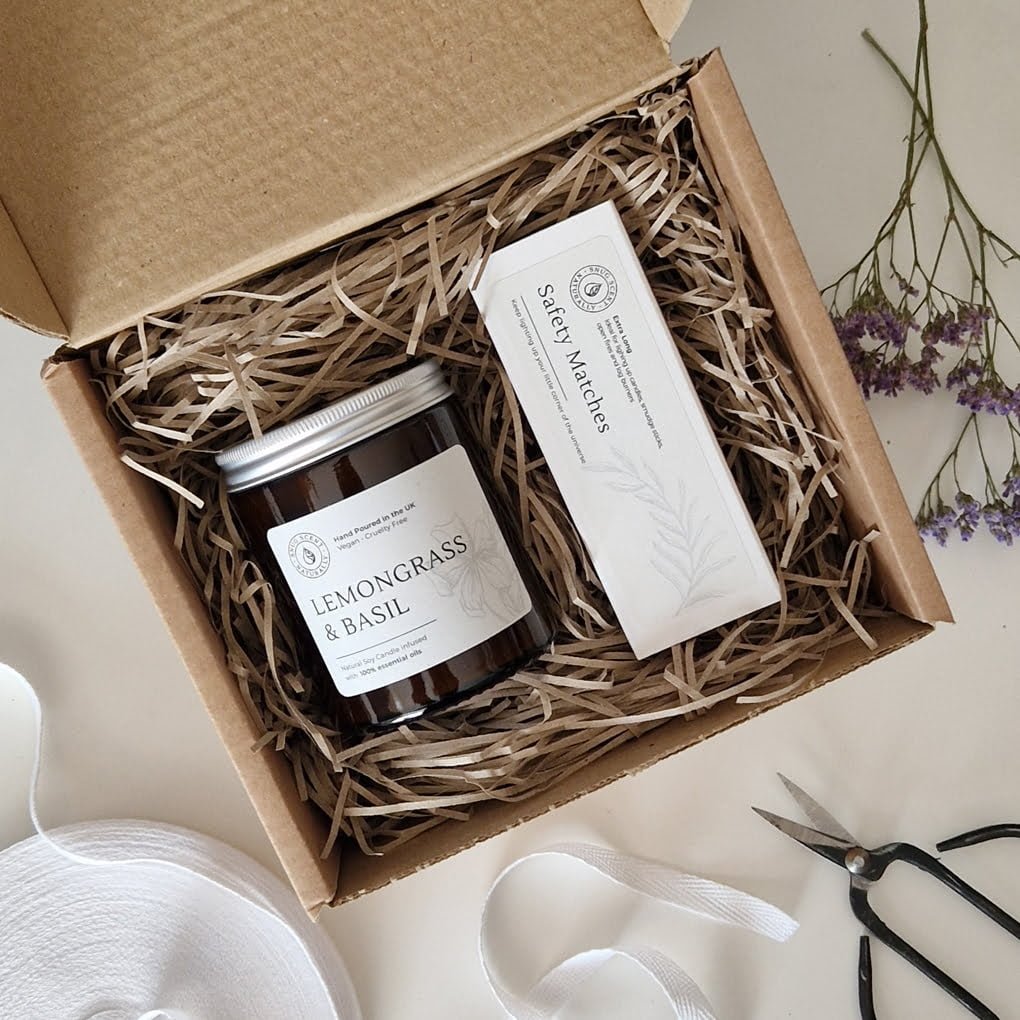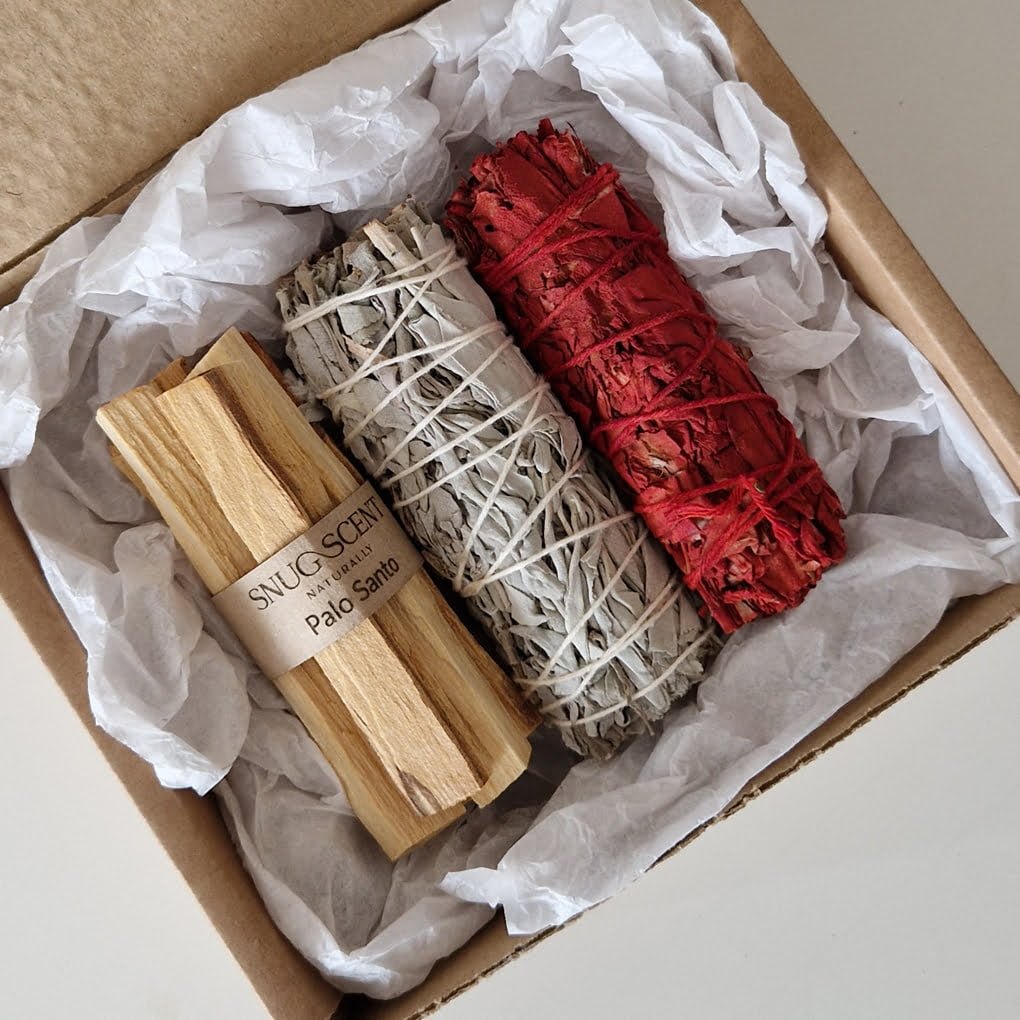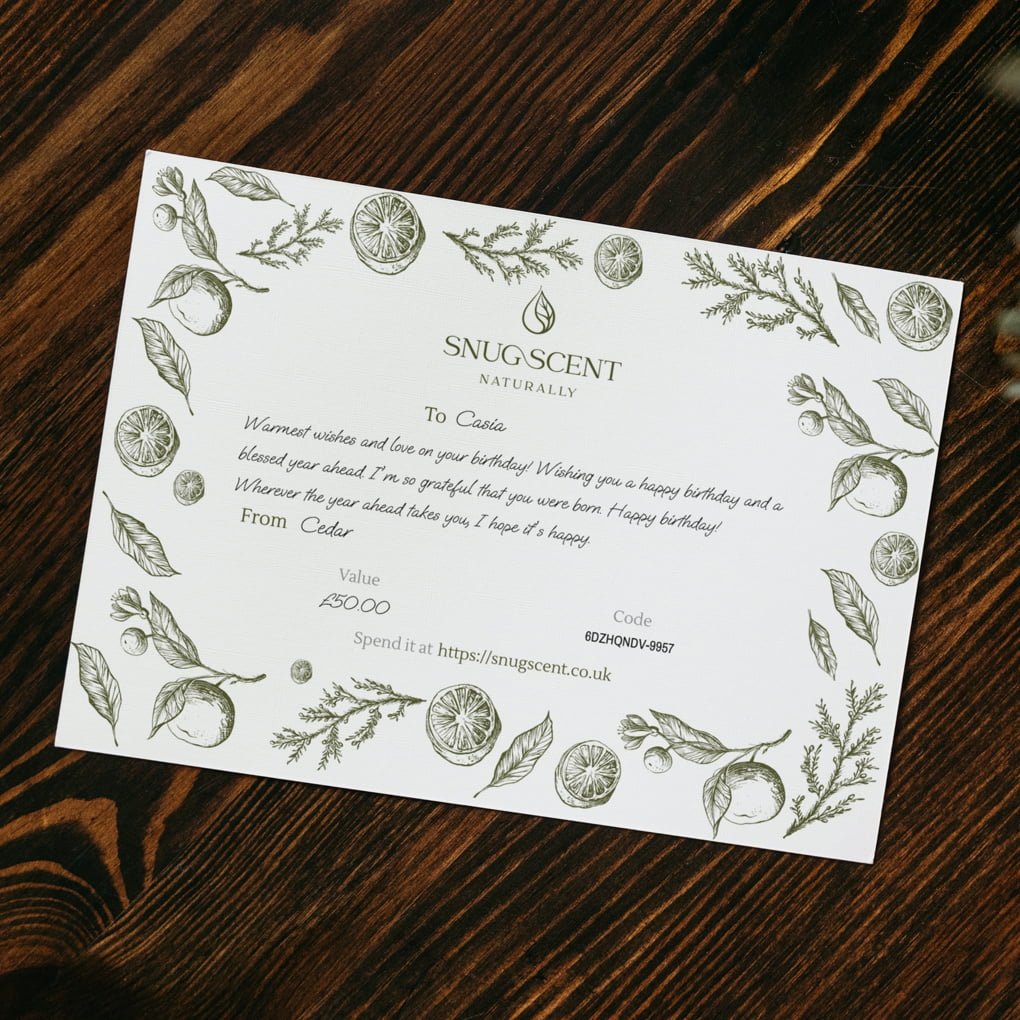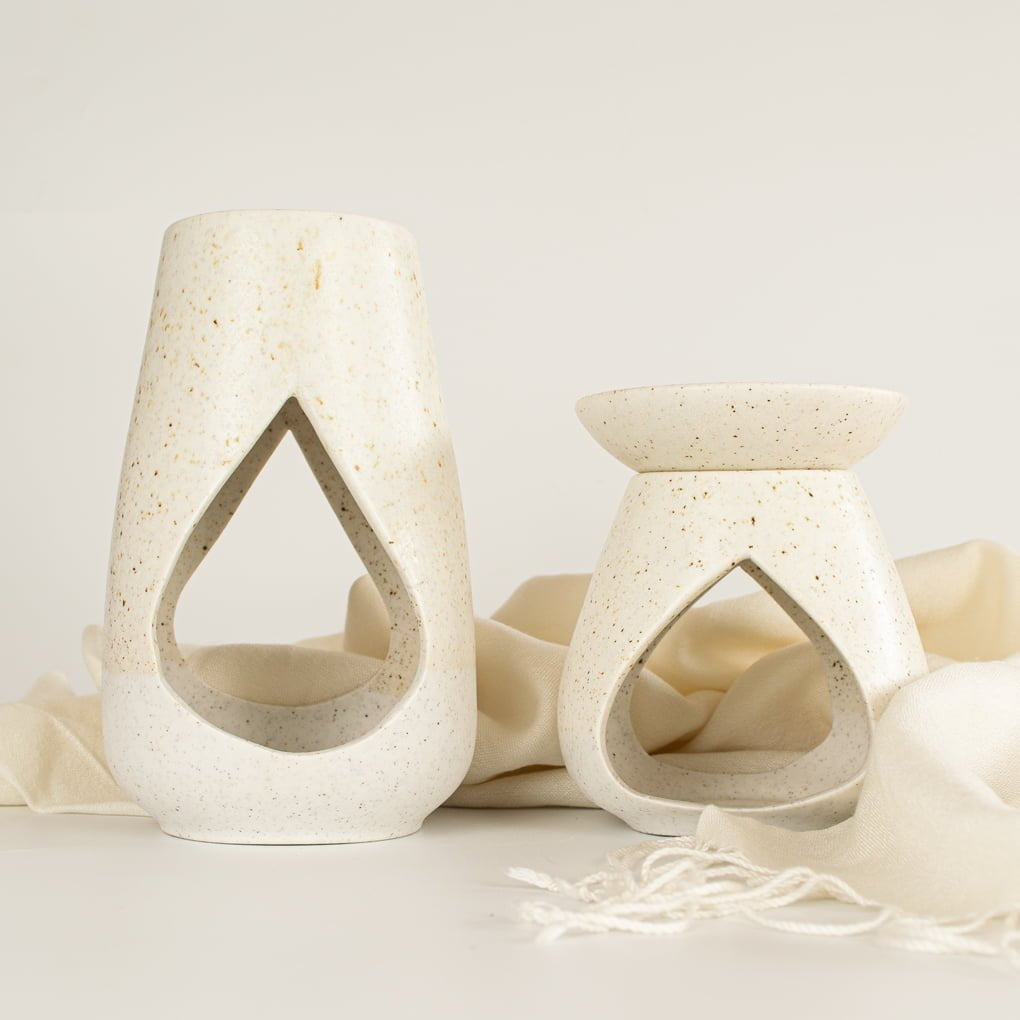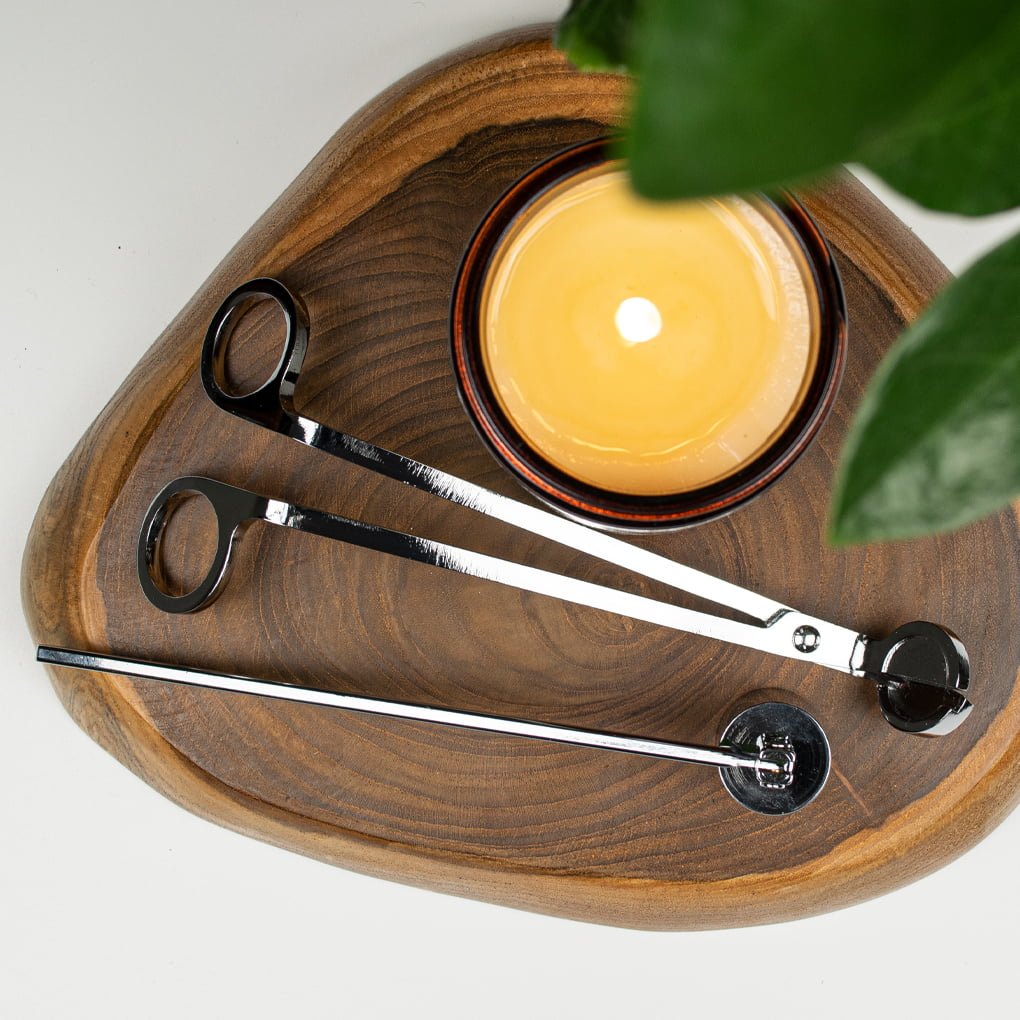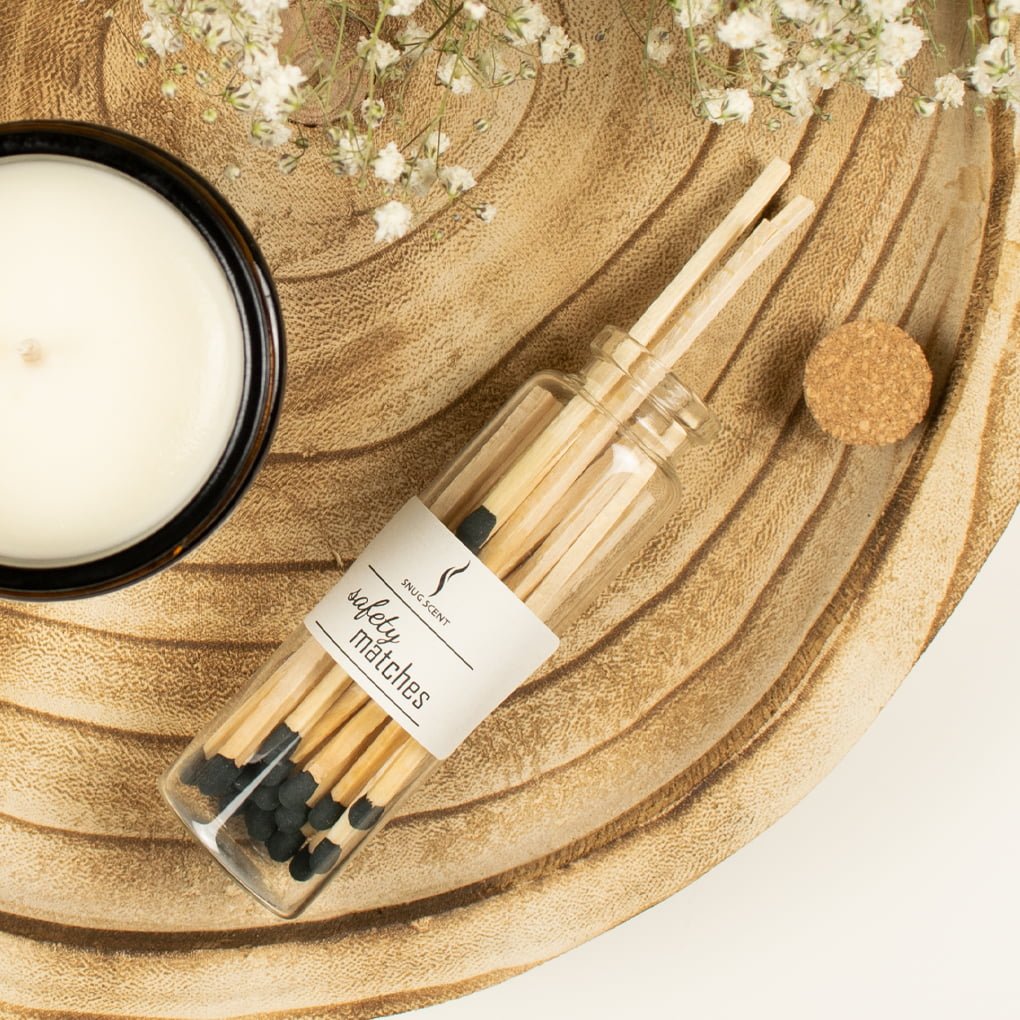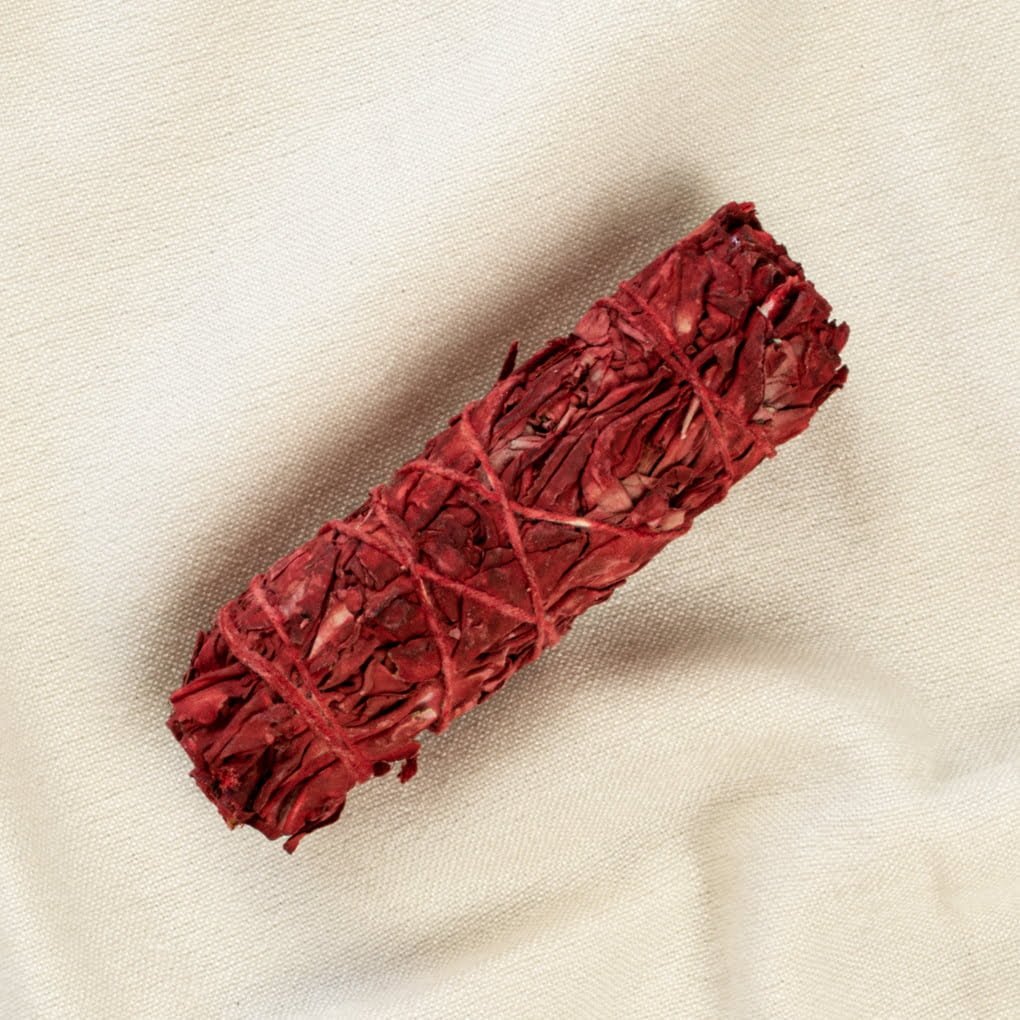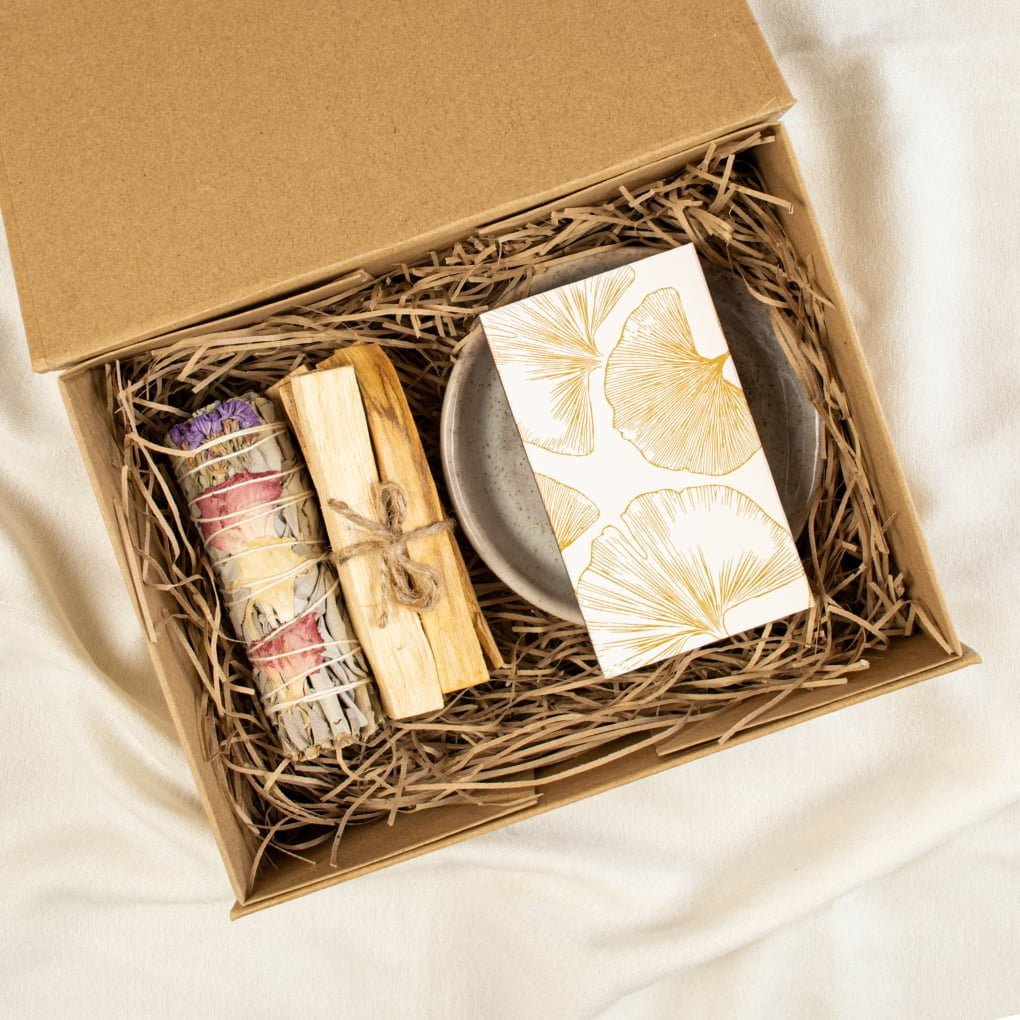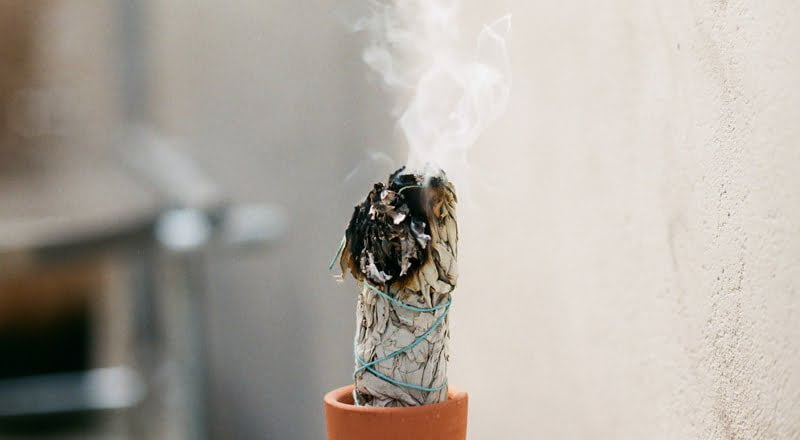About Smudging
Master The Smudge Sticks: How To Purify & Energize Your Space
We get asked a lot – what are smudge sticks, and what are they used for? We are here to answer these and many more questions and give you some tips about the smudging ritual.
Smudge sticks are bundles of herbs used for centuries to cleanse a person, space or object of negative energy. The practice is said to go back thousands of years and is still popular today. Different herbs are used in smudge sticks, depending on the desired outcome. Sometimes, it’s a simple white sage stick, and other times, it’s a combination of different herbs or spices. No matter what the smudge stick is made of, it’s said to have powerful cleansing properties. In this article, we will discuss some of the different types of smudge sticks, their benefits, and how to use them.
What are Smaudge Sticks?
Smudge sticks are small bundles of dried herbs, tightly bound together by a thin string or twine. The most common herbs used in smudge sticks include white or black sage, lavender, eucalyptus, rosemary and cedar, each offering unique properties and aromas.
Palo Santo, which translates to “holy wood” in Spanish, is a type of wood that comes from the Bursera Graveolens tree native to South America. This wood is often used in the same way as a smudge stick, although it is not a smudge stick in the traditional sense, because it’s often used as a single piece of wood.
The practice of smudging, or burning smudge sticks, has a rich cultural and historical background. It is deeply rooted in Native American traditions, where it was used for spiritual cleansing and blessing. The smoke from the burning herbs is believed to cleanse negative energy and restore balance to individuals, spaces, and objects.
In recent years, smudging has gained popularity in various parts of the world, transcending cultural boundaries. It’s seen as a natural and spiritual approach to cleansing, healing, and promoting positive energy. For a more detailed look into the history and uses of smudge sticks, check out What Is Sage Smudging? And Is It Cultural Appropriation? article.
For a deeper understanding of smudge sticks, their uses, and their benefits, let’s delve into the fascinating world of smudging.
Types of Smudge Sticks
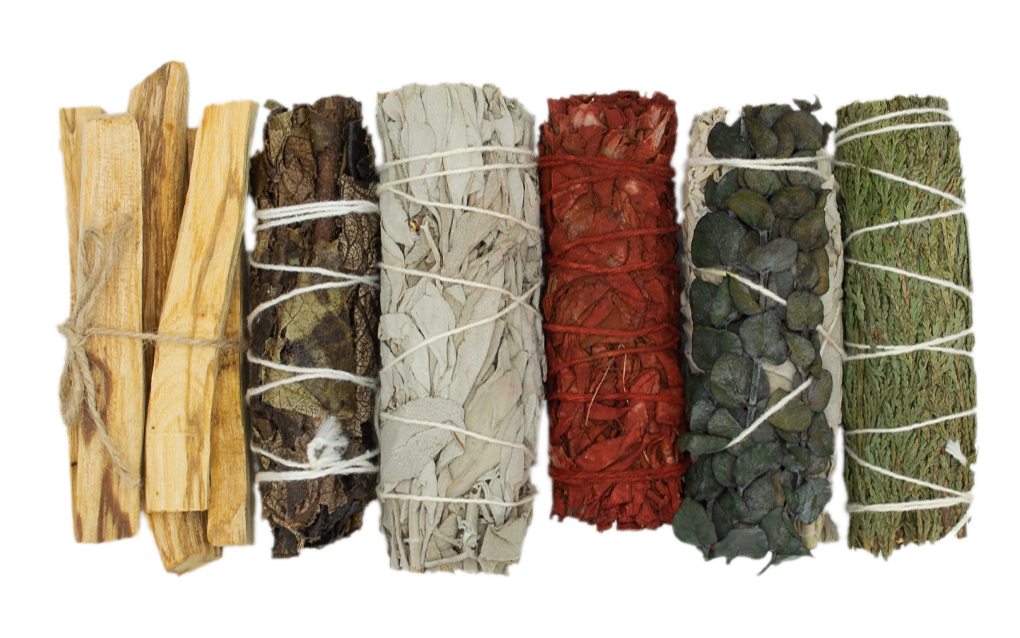
White Sage Smudge Sticks
White sage, known for its strong and aromatic scent, is probably the most common and popular herb for smudging. A white sage smudge stick is often used to prevent illness and cleanse a space as it has antimicrobial properties. It is also used for meditation, cleansing the aura and attracting positive energy.
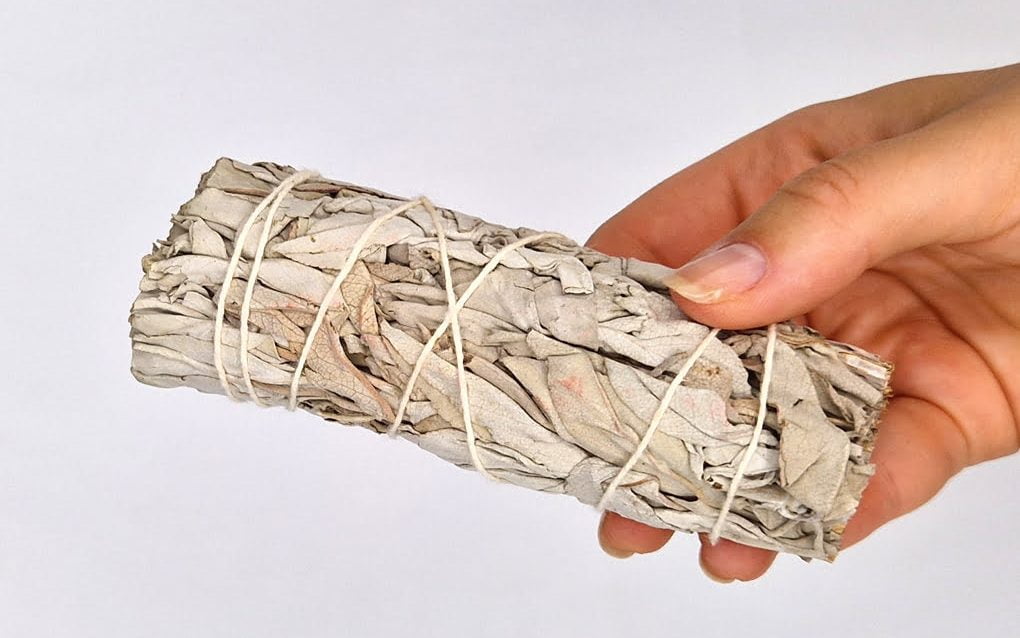
Dragon’s Blood Smudge Sticks
Dragon’s Blood is a resin said to be very powerful in cleansing negative energy. It is also said to be a good herb for protection, power, and attraction. It is commonly believed that adding Dragon’s Blood to most other blends of herbs will increase their potency. Dragon’s Blood smudge stick has a spicy but also sweet scent.
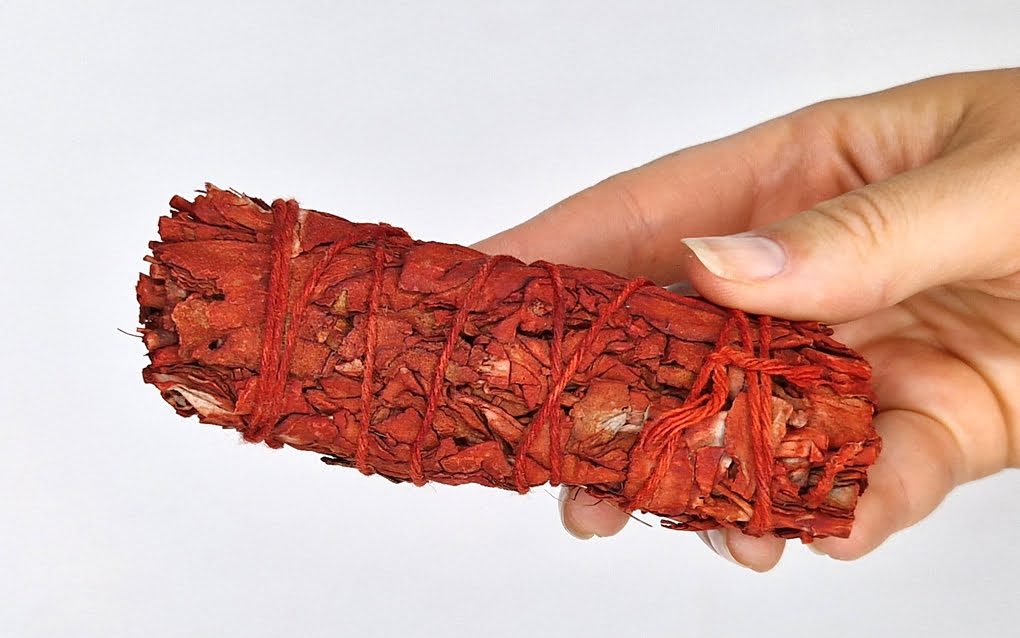
Blue Sage Smudge Sticks
Blue Sage is used to promote creativity and clarity of thought. It is also used to welcome wealth, abundance, health and prosperity. It is believed that blue sage smudge stick can give you spiritual strength.

Black Sage Smudge Sticks
Black Sage, known as ‘Dream Weed,’ encourages dreams and visions. When burnt before bedtime, it aids in restful sleep and pleasant dreams. The robust and minty scent of a black sage smudge stick is also used in spaces susceptible to foul smells, leaving a refreshing scent there.
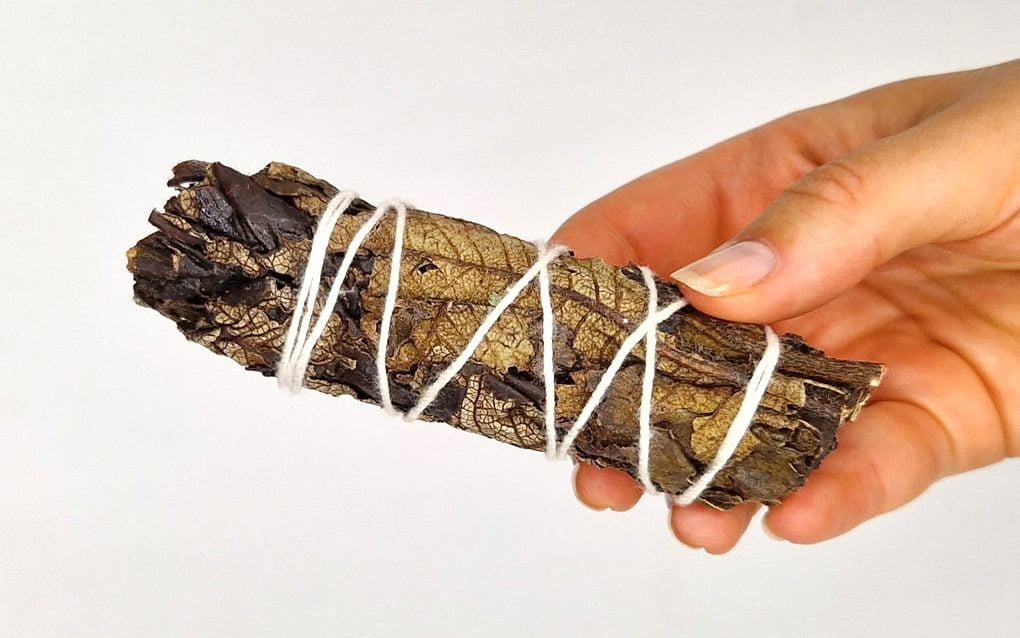
Palo Santo
Palo santo is a type of wood used to clear negative energy and promote healing. It is renowned for its rich, sweet scent and is used after a cleansing ritual with a white sage smudge stick. It is also said to help attract positive energy, creativity, cleansing, and spiritual enlightenment.
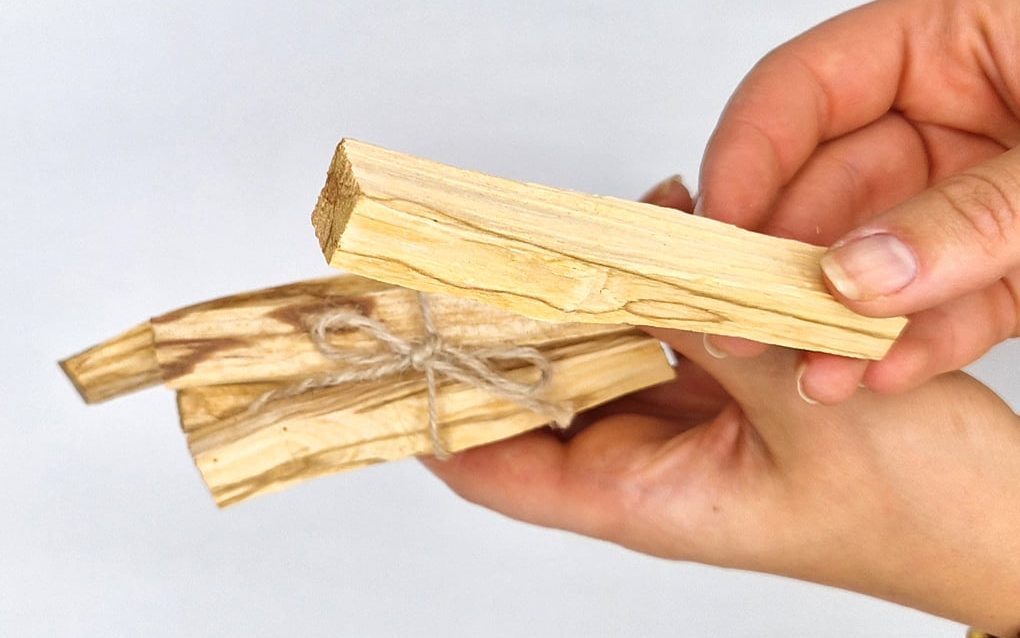
Botanicals that go along in smudge sticks
Many different herbs can be used in smudge sticks to give them additional effects. Below we will look at most popular herbs and their effects.
Cedar
White sage and cedar smudge sticks promote feelings of safety and security. When people move in, they are often used to bless a new house or space. This combination merges the cleansing power of white sage with the grounding energy of cedar, creating an earthy fragrance that instils a sense of stability and calm.
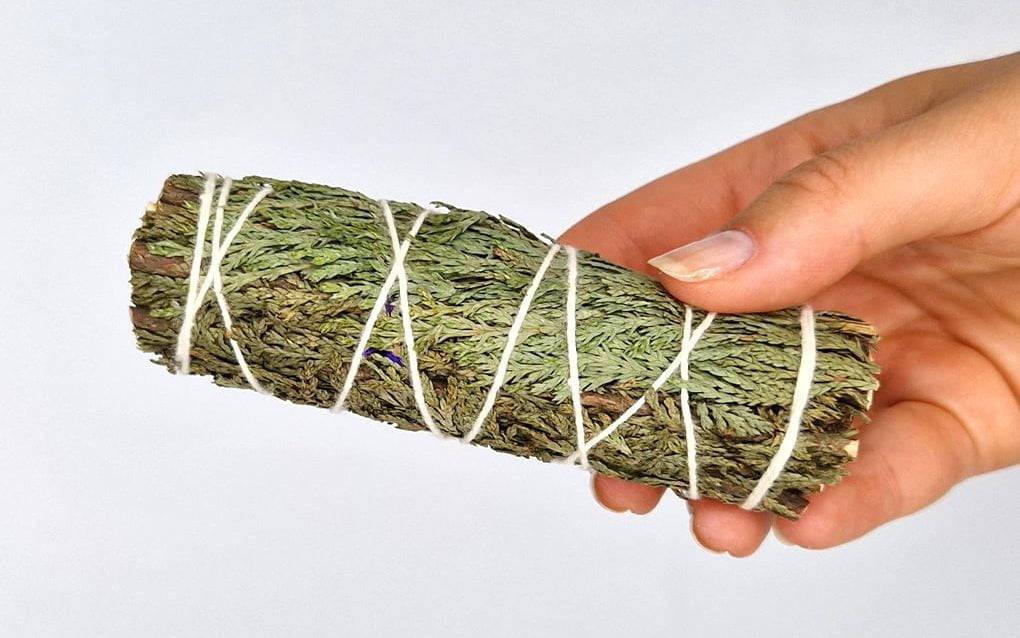
Lavender
Lavender is another popular herb used in smudge sticks and is known for its calming and purifying properties. The soothing aroma of lavender combined with the purifying qualities of white sage makes this white sage and lavender smudge stick a tool for relaxation, stress relief, and peaceful sleep.
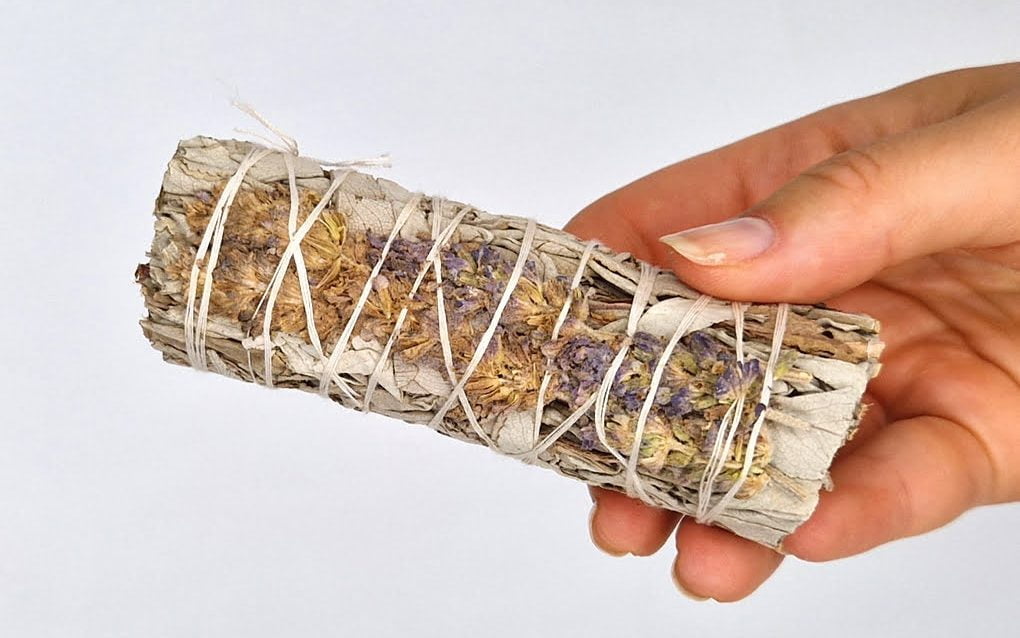
Peppermint
Peppermint is used to stimulate the mind, focus and increase energy and clarity. It is known for its antibacterial, antiviral, and anti-inflammatory properties. Furthermore, white sage and peppermint smudge stick has a minty, invigorating, and refreshing scent.
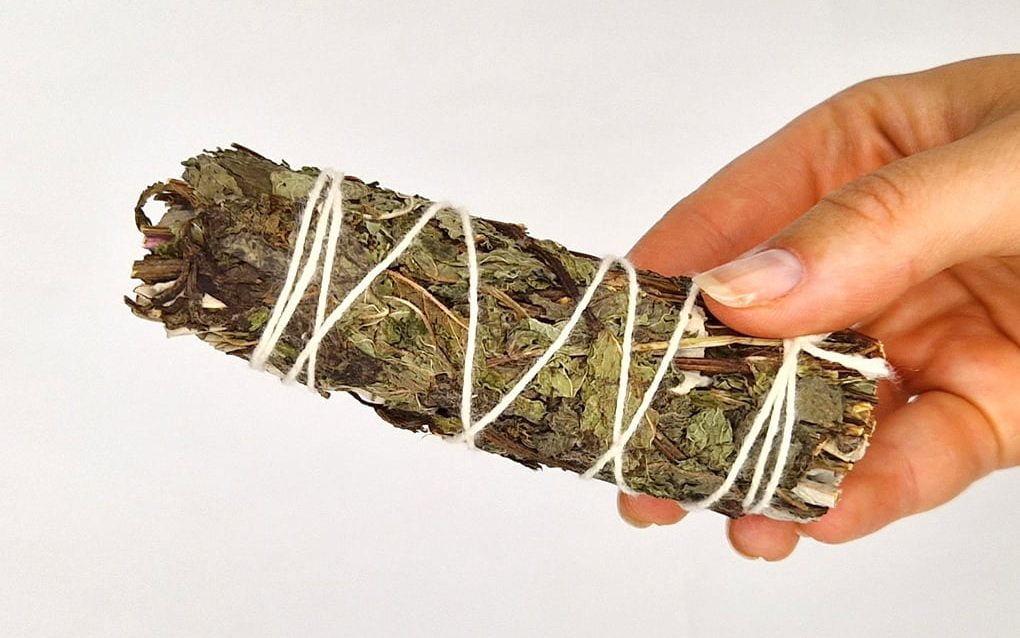
Eucalyptus
The white sage and eucalyptus smudge sticks combine the spiritual purification benefits of white sage with the refreshing aroma of eucalyptus to cleanse the air, remove exhaustion, and enhance mental clarity. This powerful duo is also known for its potential to alleviate colds, flu, and sinus infections, while the eucalyptus component has the added advantage of repelling insects.
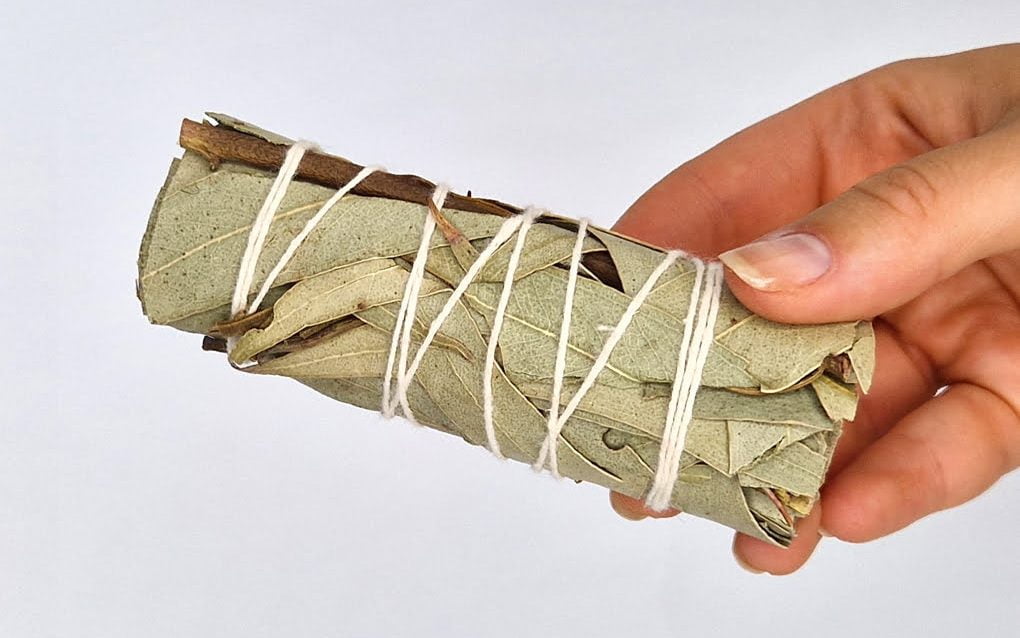
Rosemary
The white sage and rosemary smudge sticks blend the potent cleansing properties of white sage with the protective energies of rosemary, creating a smudge stick that not only diffuses a rich, woody aroma but also fosters feminine energy and repels negativity. Rosemary, known for enhancing concentration, memory, and mental clarity, also works to clear negativity, boost confidence, and energize the mind. This combination effectively repels negative energy while inviting positive vibes, making it a powerful tool for purification and protection.
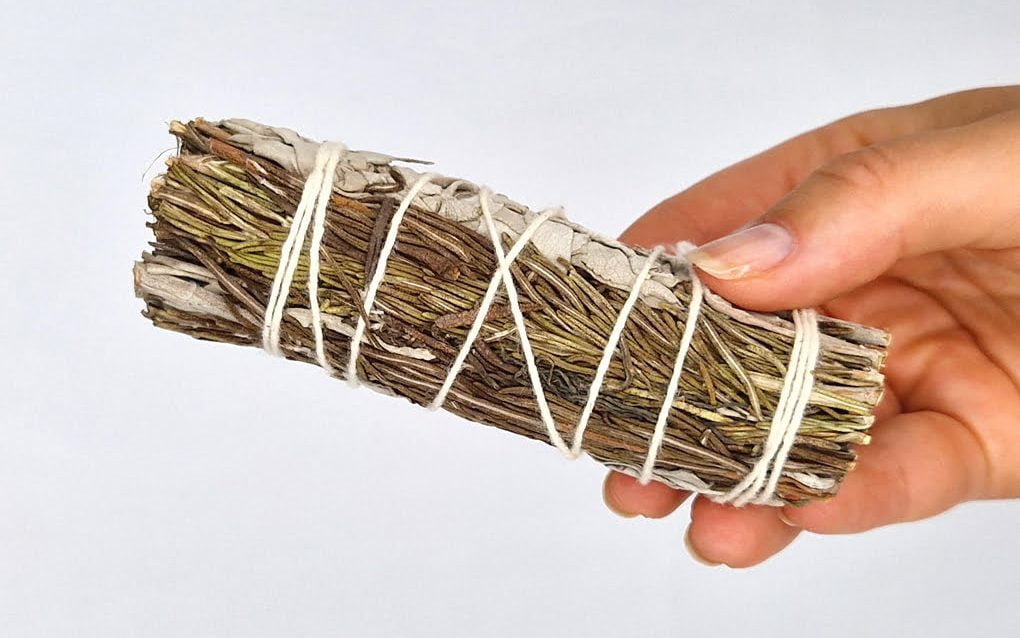
Sweetgrass
Sweetgrass is used to welcome positive energy after smudging with sage. It is said to represent new beginnings, growth, and harmony. The scent of sweetgrass is often used as an offering to the spirits.
White Sage and Black Sage
The white sage and black sage smudge sticks offer a unique fusion of purification and introspection. White sage, renowned for its strong cleansing energy, works to clear spaces of negativity and restore balance. When paired with black sage, known for its deeper, minty aroma, the combination not only enhances the purification process but also encourages a profound level of introspection and spiritual visions. This synergistic blend of white and black sage makes these smudge sticks an exceptional tool for those seeking to deepen their spiritual practice, offering a pathway to clearer insights and a purified environment. Together, they create a sacred space conducive to meditation, healing, and personal growth, making the white sage and black sage smudging stick is a must-have for practitioners of spiritual cleansing and protection rituals.
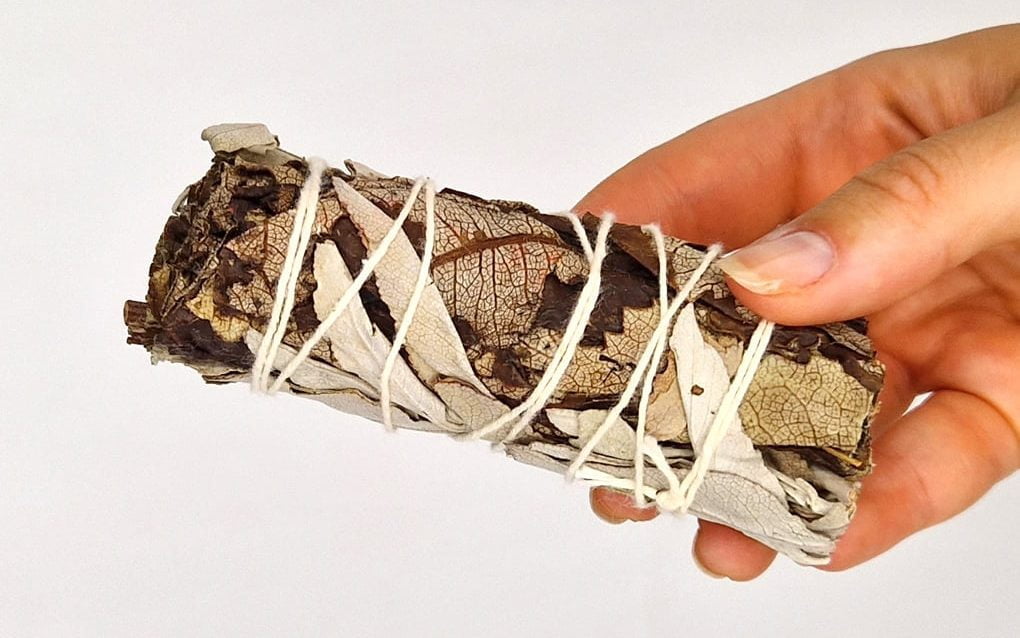
The Benefits of Smudge Sticks
The use of smudge sticks extends beyond their aromatic appeal. They are believed to offer a range of spiritual, physical, and psychological benefits.
Spiritual Benefits
Smudge sticks are often used in spiritual practices for energy cleansing and meditation. The smoke produced during smudging is believed to cleanse negative energy and restore balance. This can be particularly beneficial during meditation, helping to create a peaceful and positive environment.
- Energy Cleansing: Smudging is often used to cleanse a space, object, or person of negative or stagnant energy.
- Meditation: The calming aroma of smudge sticks can enhance meditation practices, promoting focus and tranquillity.
Physical Benefits
While smudge sticks are primarily used for their spiritual benefits, they also offer physical benefits. The smoke from certain herbs is believed to purify the air, while the aromatic properties can promote relaxation.
- Air Purification: Certain herbs, like sage, are believed to have antimicrobial properties that can help cleanse the air.
- Relaxation: The soothing aromas of herbs like lavender can promote relaxation and sleep.
Psychological Benefits
Smudging can also have psychological benefits, aiding in stress relief and mood enhancement. It can be a grounding ritual that helps reduce stress and anxiety.
- Stress Relief: The ritualistic nature of smudging can help reduce stress and anxiety.
- Mood Enhancement: Certain herbs, like sage and lavender, have been associated with mood enhancement.
It’s important to note that while many people find smudging beneficial, these benefits can be subjective and vary from person to person. Always approach smudging with respect for its cultural origins and personal mindfulness.
How To Use Smudge Sticks
Using smudge sticks is simple, but given its spiritual roots, it’s important to approach it with respect and mindfulness. Here’s a step-by-step guide on how to use smudge sticks, along with some safety precautions.
Step-by-Step Guide
- Light the Smudge Stick: Hold the smudge stick at a 45-degree angle, light the end using a match or lighter, and let it burn for about 20 seconds.
- Extinguish the Flame: After the end glows and flames appear, gently tap the stick to the bowl to extinguish the flame or gently blow it out. The smudge stick should smoulder and produce smoke. When blowing out the flame, make sure that amber is not flying everywhere—this can cause a fire.
- Cleanse Your Space: Slowly walk around the room, allowing the smoke to waft around. You can use your hand or a feather to guide the smoke.
- Extinguish the Smudge Stick: After finishing, extinguish the smudge stick by pressing it into a fireproof bowl or shell until the smoke no longer rises.
Safety Precautions
- Always use a fireproof bowl or shell to catch any ashes or embers.
- Never leave a burning or smouldering smudge stick unattended.
- Ensure the room is well-ventilated.
- Keep smudge sticks out of reach of children and pets.
Remember, the goal of smudging is to cleanse and purify, so approach it with a positive and respectful mindset. For more information on the science behind smudging, check out 10 Benefits of Burning Sage, How to Get Started, and More article.
If you are looking to start your Smudging journey, take a look at our Smudging Starter Sets. Our sets come with a smudge stick of your choice, a heatproof dish, and safety matches in a glass jar—everything you need for this amazing self-care ritual.
Anytime, Anywhere
Smudging is a practice that can be done anytime, anywhere. It is a way to cleanse yourself, your space, and your objects of negative energy. You can do smudging as often as you like, and there is no wrong way to do it. Each smudge stick has different properties and benefits, so it’s essential to do your research before purchasing one. So, if you’re feeling like you need a little cleansing, grab a smudge stick and give it a try!
Frequently Asked Questions
Smudging is the act of burning natural materials, such as sage, Palo Santo, or sweetgrass to cleanse a space. People often do this before meditating or participating in ceremonial events. Many believe that white sage has cleansing and purifying properties. In fact, these properties are what historically made it the perfect tool for getting rid of negative energy from homes. Plus, the sweet smell of white sage is really relaxing.
- Open a few windows and doors to help any smoke escape easily.
- Carefully loosen the threads around your smudge stick’s end, and fluff the herbs to create small passages for air. This careful prep ensures a more consistent and gentle burn.
- Light up your sage stick over the dish or bowl until a small flame has caught.
- Gently tap the sage stick into the dish or bowl to extinguish the flame (aim the sage stick so that the part that is on fire touches the bowl).
- Let it smoke for a while.
- When you are done, simply tap multiple times into the bowl to extinguish the sage stick completely.
- Before leaving the stick alone, please ensure that there are no smokes and that the ember is no longer glowing.
If you’re having trouble lighting your smudge stick, try these tips:
- Make sure the end of your smudge stick is not damp. If it is, hold it over a flame for a few seconds to dry it out.
- Carefully loosen the threads around your smudge stick’s end, and fluff the herbs to create small passages for air. This careful prep ensures a more consistent and gentle burn.
- Use a lighter or matches that are specifically designed for lighting candles or fires. Regular lighters can have a hard time lighting smudge sticks.
- Hold the smudge stick at a 45-degree angle and light the end of it. Then, blow on the end of the smudge stick to help keep the fire going.
If your smudge stick is damp, try putting it in the oven to dry it out. Set your oven to the lowest possible temperature and let the sage dry for an hour, rotating it after 30 minutes. Check every 15 minutes to ensure the sage is not burning in the oven.
We import our white sage sticks from sunny California, where they are grown naturally. The eco-system is always kept in mind during the pruning and harvest process so that the sage can grow 100% sustainably.
Our Palo Santo sticks are imported from South America. These sticks are made exclusively of wood from branches that have fallen naturally off the trees.
There is no specific frequency for using this product- use it as often as it feels right for you. It can be helpful before wellness practices such as meditation or yoga and also makes a great evening ritual to help you wind down at the end of the day.
If you’re worried about burning white sage, don’t stress. It’s no different than being cautious with candles – use a fireproof container, put it out when you’re done by pressing into the container and never leave it alone.
